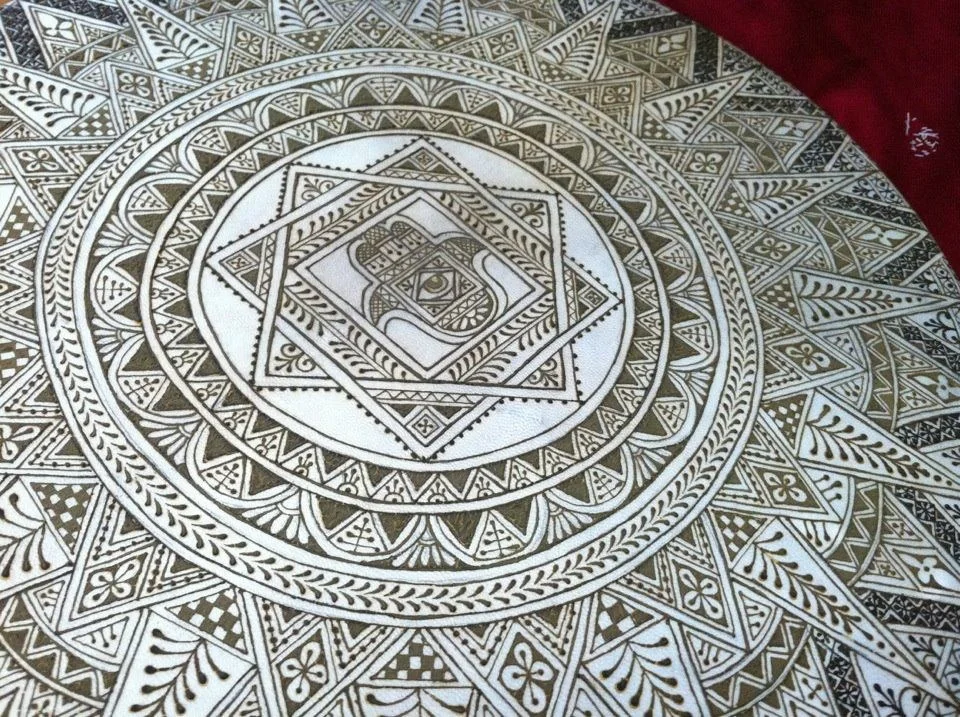about Henna
Henna Body Art
Historical, Cultural and Scientific Information
Archeologists and historians have found evidence that henna has been used as a body adornment on hair, skin and nails for over 6000 years. As far as we can trace it, henna was first used in the Nile delta of Africa. However, written and pictorial records also place the use of henna on the Arabian Peninsula, and Persia and the Middle East as well as the Indian subcontinent and even into Europe and Northern Asia for millennia.
The Night of the Henna is one of the oldest and most well known henna traditions.
• Hindu, Sikh, Muslim and Jewish, Romani, and Coptic Christian Brides have a “Night of the Henna”
• The Night of the Henna is also called the Sangeet, Mehndi Raat, Lailet al Hinna.
• Henna is supposed to be lucky for a bride and to make her beautiful. It is also used to evoke fertility, and to keep evil spirits and the jealous evil eye at bay.
Henna traditions have become global
Everywhere that people with henna traditions go they take their henna with them. So now, most places have henna traditions being practiced. Today, with the help of the internet henna traditions, designs, recipes, stories and photos can be shared instantaneously!
The Night of the Henna and other henna celebrations are practiced in many countries today including: Algeria, Egypt, Sudan, Somalia, Guinea, Senegal, Nigeria, Ethiopia, Libya, Mauritania, Eritrea, Tunisia, Morocco, Spain, Saudi Arabia, UAE, Yemen, Oman, Qatar, Bahrain, Kuwait, Turkey, Crimea, Iran, Iraq, Jordan, Syria, Israel, Mauritania, Palestine, India, Pakistan, Bangladesh, Sri Lanka, Nepal, Afghanistan, Turkmenistan, Uzbekistan, Armenia, Romania and of course the UK, Canada and the U.S.
What is Henna?
· Henna is a small tree that grows in many countries.
· There are many words for henna: mehandi, mehndi, camphire, and kopher.
· Henna wilts if nighttime temperatures are below 50For 11C
· Henna will thrive in summer heat to 120F or 48C.
· Henna grows better in dry soil than damp soil.
· Henna from hot, dry climates has more dye.
· Henna’s dye molecule is: Lawsone : 2-Hydroxy 1,4 Napthoquinone
· This is a red-orange dye which binds to keratin.
· This dye will safely stain skin red-orange
· Henna stains range from pale orange to nearly black.
· When you put henna paste on skin, the lawsone penetrates and saturates the top layer of skin cells just as a drop of ink penetrates and saturates layers of paper.
· In the first 48 hours after application, the most saturated part of the henna stains oxidize, or darken.
· Henna stains appear to fade away in 7 – 30 days.
· The stained skin cells exfoliate and are replaced by new unstained cells growing from underneath.
· Henna strengthens skin and fingernails, and deters drying and cracking.
· Hennahas some anti-bacterial and anti-fungal properties.
· Henna is a sunblock.
· Henna is effective against ringworm, dandruff, and other fungal diseases.
· Henna stains hair reddish and makes it stronger and silkier.
· We know that henna was used in Egyptian funerary rites as far back as 6000 BCE. Jewish people in many places have historically and even today use henna as part of the way they prepare their dead for burial.
Henna is also used as a medicine!
· Joint Pain/Arthritis
· Fungal infections of skin/nails/scalp
· Treatment for parasites like scabies and head lice
· Burns and abrasions and rashes
· Inflammation
· Neuropathy pain from Chemotherapy or Diabetes
What goes into natural henna paste?
· Fresh henna powder
· Lemon juice, tea, or water
· Some kind of sugar (molasses, brown sugar, dextrose, table sugar)
· Essential oils that are high in mono-terpene alcohols to help the henna oxidize to the dark burgundy color: tea tree, cajuput, cardamom, clove, lavender, coriander, geranium, naiouli, sweet orange, lemongrass, frankincense, and many more.
The Roving Horse Henna Essential Oil blend is:
Cajeput, Lavender, Corriander, Bergamot (bergaptene free)
Resources
Online
· HennaPage.com has free E-books, supplies, and an Encyclopedia of Henna www.hennapage.com
· Henna Caravan has supplies, books, and other fun Body Art products and they host the largest henna conference in the world!
www.HennaCaravan.com www.HennaCon.com
· Eshkol Hakofer is a blog about henna traditions and henna history http://eshkolhakofer.blogspot.ca
Books
Roving Horse Henna has pattern books available for sale through Henna Caravan. There are some wonderful pattern books from other artists there as well.
· www.goodreads.com/list/show/84609.South_Asians_in_YA Best South Asian Fiction list from Good Reads
· https://www.goodreads.com/list/show/48.Best_South_Asian_Fiction
· Henna House by Naomi Eve
· Secrets of the Henna Girl by Sufiya Ahmed
· Princess by Jean Sasson
· The Shabanu Series by Suzanne Fisher Staples
Films
· The Painted Bride
· Latcho Drom
· Monsoon Wedding
· Bend it Like Bekham
· Bride and Prejudice
· The Second Most Exotic Marigold Hotel
Supplies
· Roving Horse Henna sells kits, supplies and ready to use henna locally at our events and we will ship within the continental US.
· Henna Caravan are in southern California and ship supplies all over the world. . www.hennacaravan.com
· Henna Page has a web shop at www.mehandi.com . Look for their online Encyclopedia of Henna and FREE E-books
· www.sarahenna.com for supplies in the Seattle area.


